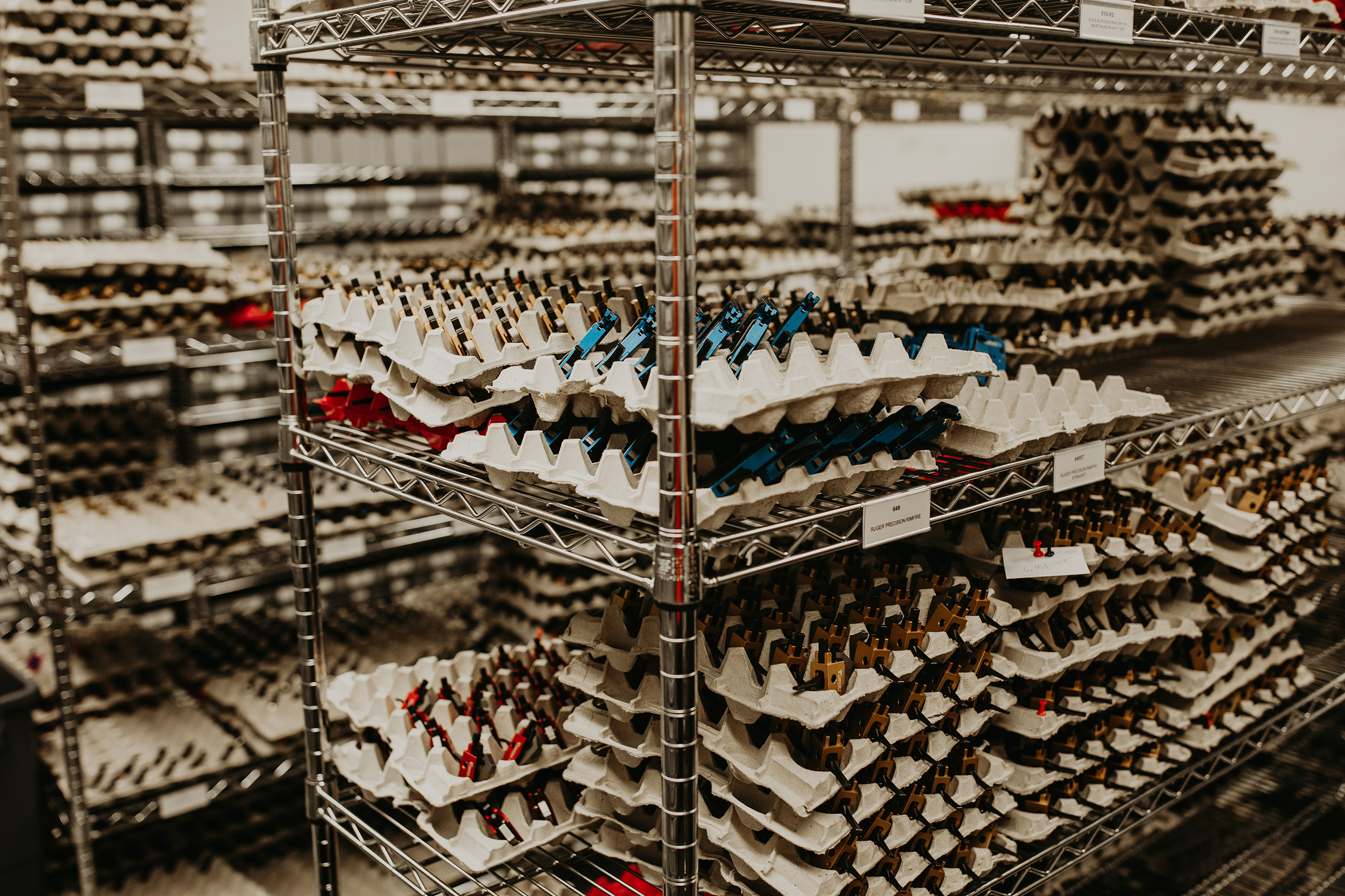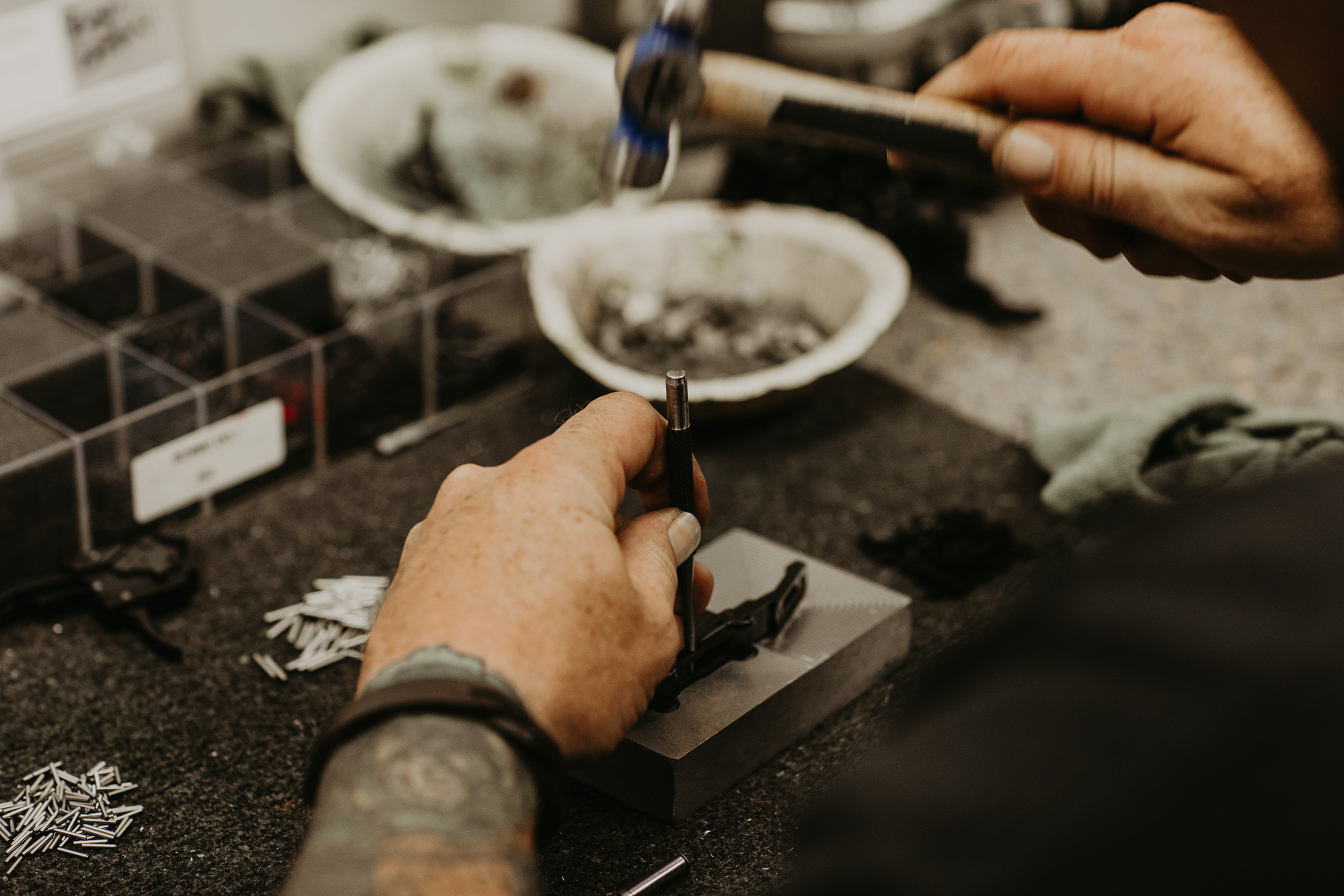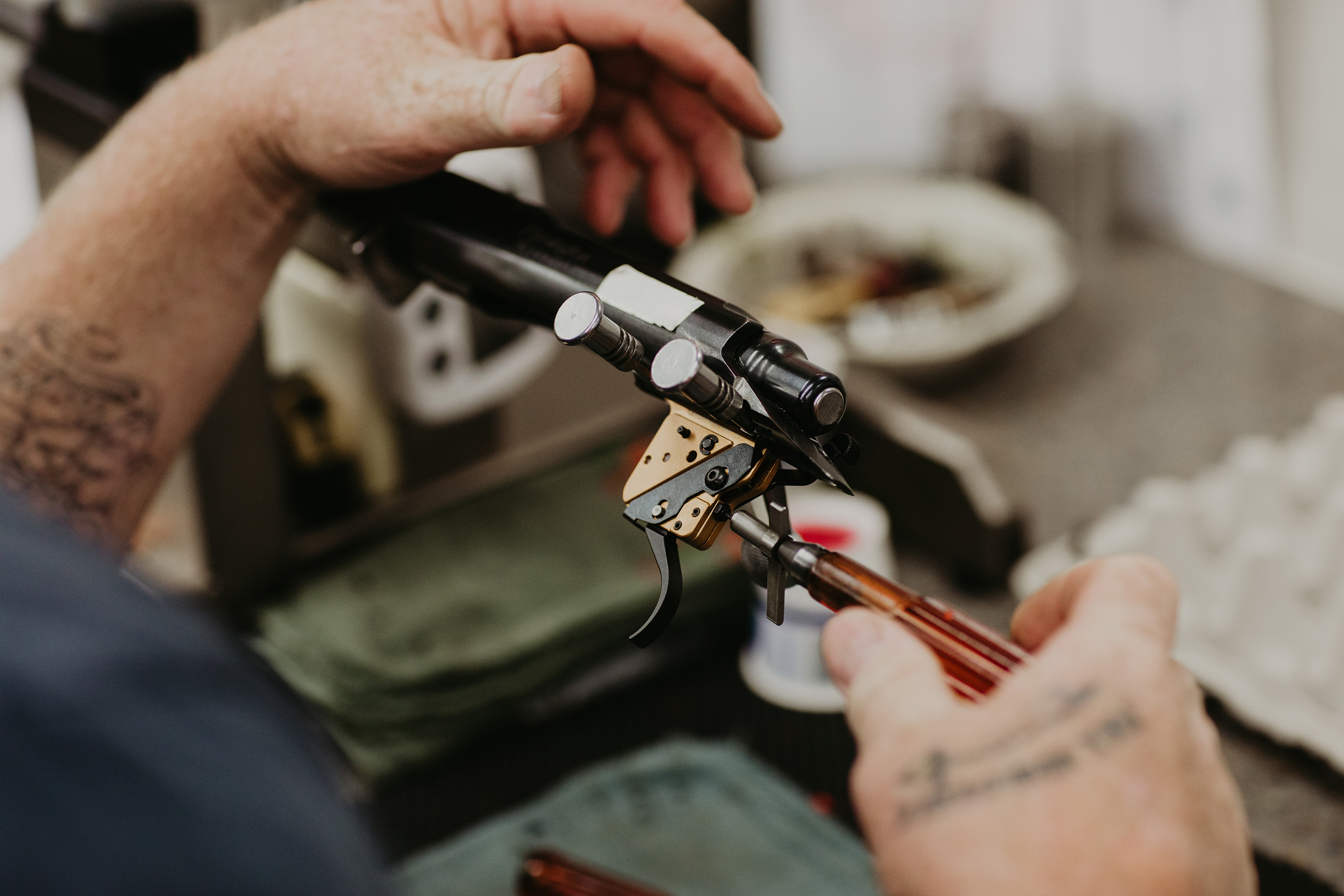The Timney Standard
Mar 23rd 2022
At Timney Triggers, we strive for excellence. Whether we are talking with our loyal customers, hammering in a roll pin, or simply creating a blog post, quality is of the utmost importance. That is why we hand-assemble, test, and calibrate every Timney Trigger for its specific platform before shipping it out to our customers. It’s all a part of the rigorous Timney Standard that ensures the reliability and longevity of our products. The process is quite thorough and can take hours to complete even one batch of triggers, but it’s worth it because when you order a Timney Trigger you know you are getting a lifetime product.

Hand-Assembly
The trigger making process starts in the assembly room. Every assembler is assigned a “traveler”, which is basically just form that lists the trigger type, quantity, and parts needed for the assembly job. Each traveler can contain anywhere between 30 to 300 triggers, and each trigger can require 5 to 15 parts for proper assembly. Everything needed for assembly, including parts, tools, instruction, etc., can be found in one very aptly named room: the parts room. It is the assembler’s job to acquire the correct materials from the parts room and assemble the trigger appropriately and efficiently so it can move on to the next phase.
Assembly is a complicated process because no two triggers are the same. Some triggers, such as the Elite Hunter, can take a while to finish due to plethora of steps and parts required. While other triggers, such as the Impact, take only about 5 parts, therefore assembly can be done quickly. Overall, the assembly time of a trigger greatly depends on what type of trigger it is, how many triggers are requested on the traveler, and who is assembling the triggers. However, all of our assemblers are highly skilled experts who can churn out triggers in their sleep, so it doesn’t take long for them finish a batch of triggers and send them off to the next phase. Once the traveler is complete, the assembler takes the triggers to the assembly lead who checks them over to ensure the parts have been fitted accurately and there are no blemishes on the trigger housing. Once the lead approves of the triggers, they get sent over to testing where they await the next phase of The Timney Standard.

Testing and Calibrating
Testing is a highly important step in the trigger making process because this is where the trigger is checked for comprehensive functionality, and it is calibrated for its specific platform. In order to complete this step, the testers first go to the parts room to grab their trigger tray and the required firearm actions that have been fitted by Larry the Legend, one of our machinists who has been with Timney since the dawn of time. These actions allow us to safely test our triggers on a specific action that completely mimics a functioning firearm action.
Once in the action, the tester cycles the trigger 5-10 times to ensure the trigger is firing and operating properly. Next, we test the functionality of the safety. First the tester checks to ensure the safety can be moved easily and comfortably. Then the tester checks that while it is on safe, the trigger cannot be pulled, and while it is on fire the trigger pulls like normal. This step is vital because the functionality of the safety determines whether or not the trigger will move on to the next phase. Once the safety proves to be in working condition, the pull weight and overtravel are set. After the pull weight is calibrated, the tester cycles the action 3-5 times to ensure that it consistently maintains the specified pull weight. After all the testing and calibrating has been completed, the tester then puts their Loctite color on the trigger to mark that they have completed and approved of this trigger.
The triggers are then taken to the final step: approval by the testing lead. At this stage, the testing lead randomly checks different triggers to ensure that they all function correctly. This stage of testing is cutthroat, if even one trigger isn’t perfect, the entire tray fails and has to be retested. This part of the Timney Standard ensures that all of our customers are receiving a high quality product that is operating at peak performance. Once the lead approves of the triggers, they add their Loctite color to the triggers in the tray, which are then taken to shipping where they will be prepped and packaged to meet you at your doorstep.
Maintaining the Timney Standard is highly important to us and is something that we never skimp on. We want to make sure that the product you receive is made from high quality materials and was created by experts who care about your shooting experience. We take pride in our extensive trigger making process, and we hope that you are just as proud to be a Timney Trigger owner as we are to have you as a customer.

